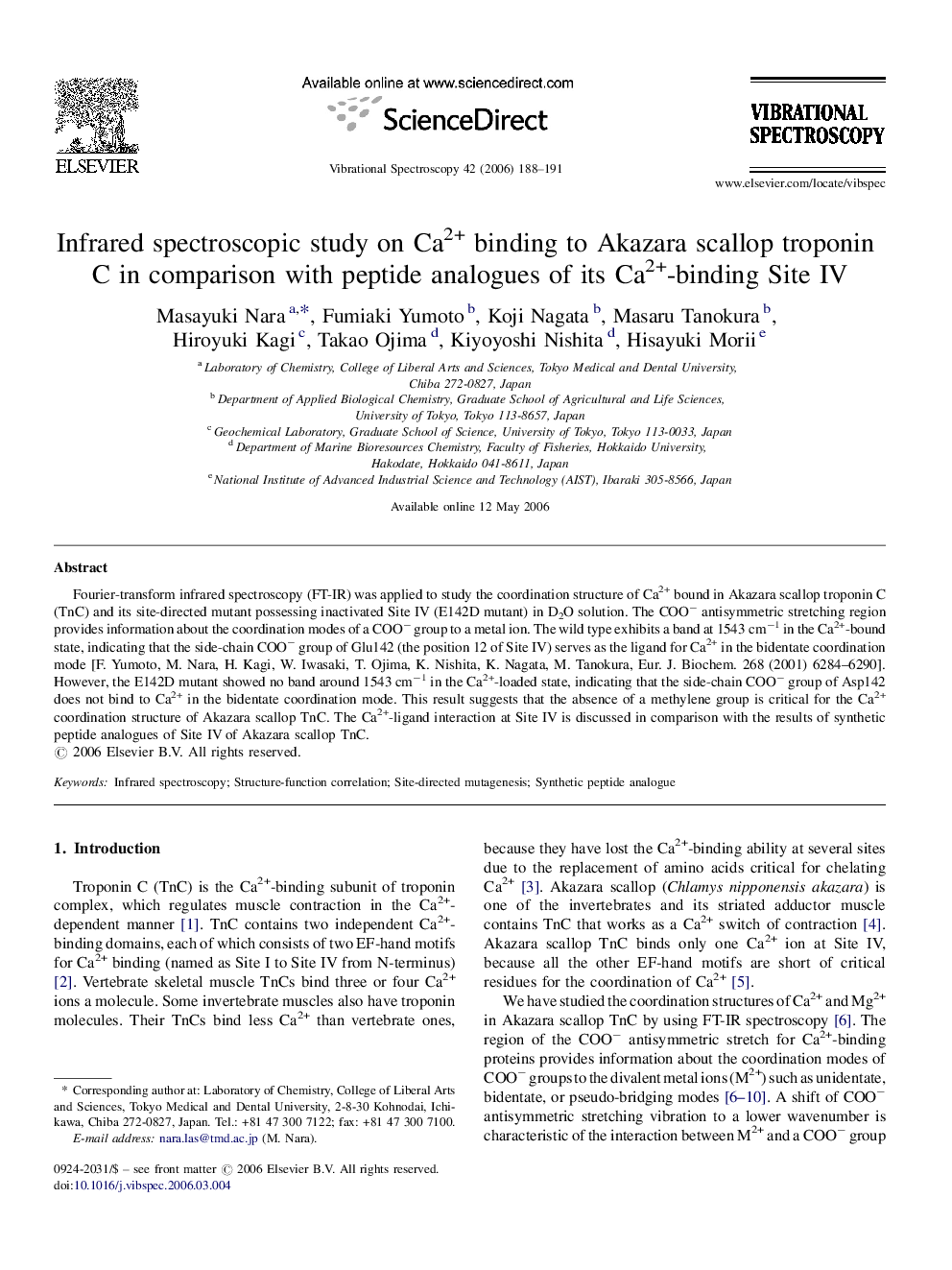| Article ID | Journal | Published Year | Pages | File Type |
|---|---|---|---|---|
| 1250066 | Vibrational Spectroscopy | 2006 | 4 Pages |
Abstract
Fourier-transform infrared spectroscopy (FT-IR) was applied to study the coordination structure of Ca2+ bound in Akazara scallop troponin C (TnC) and its site-directed mutant possessing inactivated Site IV (E142D mutant) in D2O solution. The COOâ antisymmetric stretching region provides information about the coordination modes of a COOâ group to a metal ion. The wild type exhibits a band at 1543Â cmâ1 in the Ca2+-bound state, indicating that the side-chain COOâ group of Glu142 (the position 12 of Site IV) serves as the ligand for Ca2+ in the bidentate coordination mode [F. Yumoto, M. Nara, H. Kagi, W. Iwasaki, T. Ojima, K. Nishita, K. Nagata, M. Tanokura, Eur. J. Biochem. 268 (2001) 6284-6290]. However, the E142D mutant showed no band around 1543Â cmâ1 in the Ca2+-loaded state, indicating that the side-chain COOâ group of Asp142 does not bind to Ca2+ in the bidentate coordination mode. This result suggests that the absence of a methylene group is critical for the Ca2+ coordination structure of Akazara scallop TnC. The Ca2+-ligand interaction at Site IV is discussed in comparison with the results of synthetic peptide analogues of Site IV of Akazara scallop TnC.
Related Topics
Physical Sciences and Engineering
Chemistry
Analytical Chemistry
Authors
Masayuki Nara, Fumiaki Yumoto, Koji Nagata, Masaru Tanokura, Hiroyuki Kagi, Takao Ojima, Kiyoyoshi Nishita, Hisayuki Morii,
